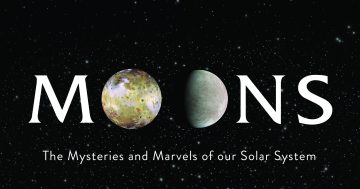Jonathan Amos* says the European Space Agency’s mission to explore the moons of Jupiter will launch later this year.
 Europe is about to undertake one of its grandest-ever space missions, exploring the icy moons of Jupiter.
Europe is about to undertake one of its grandest-ever space missions, exploring the icy moons of Jupiter.
The Juice (JUpiter ICy Moons Explorer) satellite is going through final testing in Toulouse, France, after which it will be shipped to the launch site in South America.
It’s due to depart Earth in April.
The six-tonne spacecraft will make a series of flybys of Callisto, Ganymede and Europa, using an advanced package of instruments to investigate whether any of these worlds are habitable.
This might sound fanciful. The Jovian system is in the cold, outer reaches of the Solar System, far from the Sun and receiving just a 25th of the light falling on Earth.
However, the gravitational squeezing and pushing the giant planet gives its moons means they have the energy and warmth to retain vast quantities of liquid water at depth.
Wherever there is water, there’s an opening for life.
Mission scientist, Emma Bunce from Leicester University in the United Kingdom says in the case of Europa, it’s thought there is an ocean, maybe 100 kilometres deep, underneath its ice crust.
“That depth of ocean is 10 times that of the deepest ocean on Earth, and the ocean is in contact, we think, with a rocky floor,” Professor Bunce said.
“So that provides a scenario where there is mixing and some interesting chemistry.”
Mark the calendar for July 2031. That’s when Juice arrives at Jupiter. It will then conduct 35 flybys of the three moons before settling permanently around Ganymede in late 2034.
Aerospace company Airbus has spearheaded the construction of the €1.6 billion ($A2.5 billion) project.
Everything is now fully assembled, including Juice’s suite of 10 scientific instruments.
Airbus Juice Project Manager, Cyril Cavel said the probe would carry a number of high-resolution cameras in all possible wavelengths — infrared, the visible and ultraviolet.
“The high-resolution visible telescope, which is called Janus, will take fantastic pictures very close to the moons because we will do flybys at just 400 kilometres altitude. They will be stunning shots,” Mr Cavel said.
Radar will also peer inside the moons; lidar, a laser measurement system, will make 3D maps of their surfaces; magnetometers will trace their complex electrical and magnetic environments; and sensors will sample the particles that whiz around them.
Juice won’t be searching for alien fish in the deep oceans.
Its job is to learn more about the possibilities for habitability that future missions could then investigate in more detail.
Scientists have long pondered the idea of putting landers on one of Jupiter’s icy moons to drill through its crust to the water below.
That could happen one day, perhaps in the latter half of this century.
You need patience to work in the outer Solar System. The orbits of Earth and Jupiter may be ‘only’ 600 million kilometres apart, but you can’t easily go direct, not without a stupendous rocket.
Even though Europe’s Ariane 5 is powerful, it doesn’t have that kind of heft.
Instead, Juice will be sent on a rather circuitous route that will use the gravity of Venus and Earth to slingshot the probe out to the gas giant.
US space agency, NASA is sending its own satellite called Clipper.
Although it will leave Earth after Juice, it should actually arrive just before its European sibling and will focus on Europa.
Another member of the Juice team, Michelle Dougherty said there would be a much deeper understanding with the two probes there together.
“It will be interesting, for example, when Clipper is going past Europa if there is a plume coming from the moon,” Professor Dougherty said.
“Clipper will be making the close-in measurements, but Juice will be watching at a distance to see what impact that has on the environment around Europa and whether we get bigger spots in the auroral lights on Jupiter.”
*Jonathan Amos is a science correspondent with the British Broadcasting Corporation. He focuses on the Earth sciences, with a particular interest in the changes taking place in polar regions. He can be contacted @bbcamos.
This article first appeared on the BBC website.



